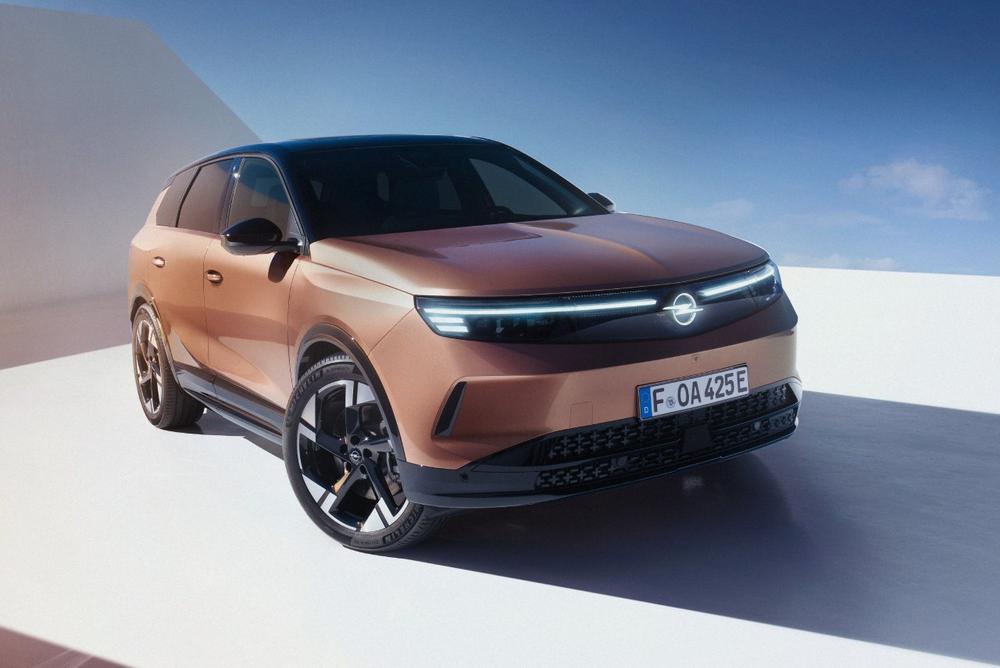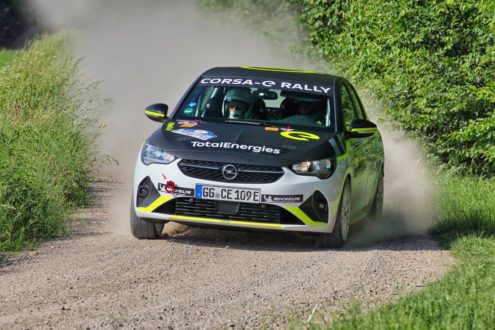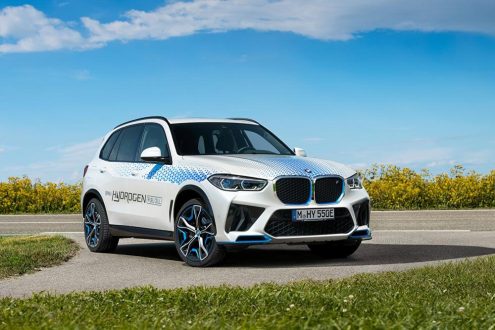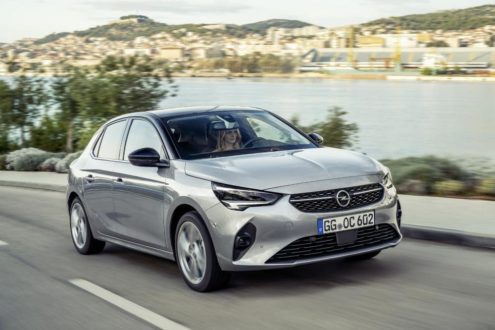
Opel Unveils Stunning Next Generation Grandland SUV
- From concept to reality: All-new Grandland adopts many design features from the Opel Experimental
- German Energy: Designed, engineered and made in Germany
- BEV-native: Top-of-the-line Opel SUV based on new STLA Medium platform
- Electric freedom: Grandland Electric features new flat battery packaging design and will offer a range of up to around 700 kilometres (WLTP1)
- Lighting innovations: New Intelli-Lux Pixel HD system with over 50,000 individual elements
- Greenovation: Interior fabric from recycled PET
- Flexible storage options: Over 35 litres of interior storage compartments, including semi-transparent Pixel Box
Rüsselsheim. Stylish and dynamic, spacious and versatile with a fully electrified drivetrain portfolio – this the new Opel Grandland unveiled by the Rüsselsheim-based carmaker today. The newcomer brings many design features first seen on the Opel Experimental concept car to life for the first time on a serial production model. These features include the 3D Vizor with illuminated Blitz logo proudly sitting at the centre and the permanently illuminated “OPEL” lettering at the rear. Further highlights include the Intelli-Lux Pixel HD lighting system with over 50,000 individual elements, plus the BEV-native STLA Medium platform and new flat battery packaging design which allow for a 98 kWh battery. This will enable the Grandland Electric to cover up to around 700 kilometres locally emissions-free (according to WLTP1).
“The new Grandland is a milestone for Opel. With it, every Opel without exception is now available electrically. This is a big step in our electric offensive. The new Grandland was designed and developed in Rüsselsheim and will be built in Eisenach. The relationship to the Opel Experimental is unmistakable. It offers innovations that were first seen on this extraordinary concept car. The new Grandland will therefore strengthen our position in the important C-SUV segment,” said Opel CEO Florian Huettl.
BEV-native platform helps enable electric range of up to around 700 km (WLTP1)
The next generation Grandland represents a major step for Opel in making electro-mobility even more appealing. It is the first Opel to benefit from the Stellantis STLA Medium BEV-native platform. Thanks to the new architecture, the new flat battery packaging with up to 98 kWh, the new generation electric motor and energy-saving features such as the heat pump, the new Grandland Electric will be able to deliver a locally emissions-free WLTP1 electric range of up to around 700 kilometres. Elsewhere, short pit-stops for recharging are also guaranteed. At a public fast charging station, it only takes around 26 minutes to recharge to 80 per cent of the battery capacity.
3D Vizor, illuminated Blitz, Edge Light Technology and Intelli-Lux Pixel Matrix HD
The new underpinnings also gave the designers a new freedom and the impressive stance of the new Grandland becomes apparent at the very first glance. Thanks to 173 mm of additional length, 19 mm of additional height and 64 mm of additional width compared to its predecessor, the newcomer conveys confidence (Length: 4650 mm; width: 1905 mm; height: 1660 mm). And combined with up to 20-inch alloy wheels this helps it sit boldly and comfortably at the top of Opel’s SUV portfolio. Further grandeur is added by the new execution of the characteristic Opel brand face: the 3D Vizor. This element is combined with the illuminated Opel Blitz logo which is made even more prominent using Edge Light Technology. The new Grandland embraces the “Opel Compass” design that the Experimental concept cart introduced. It builds on the principles of the centre crease, with all the features being organised horizontally with the “Electrified Blitz” emblem at the centre.
The new illuminated logo is also accompanied by yet another lighting innovation from the Rüsselsheim engineers – the industry-leading Intelli-Lux Pixel Matrix HD. The system offers over 50,000 elements (51,200 to be precise, with 25,600 on each side) for high-definition light distribution and celebrates its debut in the newcomer. Based on the traffic situation, up- and oncoming objects are detected by a camera and the Intelli-Lux Pixel Matrix HD light cuts out these objects even more precisely than standard Matrix Light technologies and delivers a much brighter and homogeneous light pattern – all while ensuring that other road users are not glared. Furthermore, the new welcome/goodbye animations with graphical projections in front of the vehicle already give an outlook on future possibilities.
With its two-tone floating roof and contrast cladding, the Grandland is visually stretched for a sleek elegant look. The overall body design is organised and structured while remaining fluid and organic. The sharp wheel-arch feature lines flow through the car and visually help to push the wheels out. This is combined with the robustness of the cladded elements around the wheels and lower body. The long wheelbase of 2,784 mm and steep tailgate emphasise the increased roominess in cabin and trunk. The rear seats can be folded down 40:20:40 and thus, create a load volume of up to 1,641 litres.
At the rear, the distinctive compass lighting signature including the very first integration of the illuminated “OPEL” wordmark as part of the signature also makes its production model debut. And fully in line with Opel’s Greenovation approach to conserve all resources related to the automobile, the name of the car is no longer displayed by chrome lettering – instead it is centrally embossed in the tailgate.
Roomy interior with 16-inch central display, AGR seats and clever storage solutions
On the inside, occupants of the new Grandland are greeted by further bold and pure elements in combination with a warm and engaging ambience. Architecturally, the interior layout emphasises a horizontal theme, with lines running across the instrument panel into the doors, enhancing the feeling of width and spaciousness, whilst the slightly driver oriented 16-inch central display and high centre console generate a sporty feeling. Behind the steering wheel, a discrete wide and fully digital cluster provides essential information, allowing the driver to focus on the pleasure of driving and, in combination with the Intelli-HUD head-up display, avoiding the need to take their eyes off the road. Drivers also have the option of manually or automatically triggering the Pure Mode. It reduces the content on the driver information cluster, the head-up display and the central display and ensures even less distraction when driving at night or in the rain. In typical Opel tradition, frequently used settings such as climate control can also be operated intuitively via a few remaining physical buttons.
The side air vents are integrated into the door which also visually emphasises the width of the instrument panel. The top of the instrument panel has a beautiful technical appearance and is aesthetically divided into two surface finishes, to underline the overall tone of the design. Below this, the “edge light“, which is based on the same technology used on the Vizor, adds a precise glass like execution of colour and light, supported by the attractive indirect ambient light on the instrument panel, as well as the door inserts. The instrument panel mid-section is fabric wrapped, and visually runs into the door shoulder, producing an appealing and tactile cockpit.
The interior also provides a particularly involving driving experience: Opel’s ergonomic AGR seats enjoy an award-winning reputation and the new Grandland continues this long-standing tradition. Certified by “Aktion Gesunder Rücken e. V.” (“Campaign for Healthy Backs”) they introduce a new proximity comfort feature: the powered bolsters. This function highly improves lateral comfort adjustment thanks to two pneumatic pockets located in the backrest’s side bolsters. The seats also offer ventilation and massage for the driver. Meanwhile, passengers in the rear enjoy 20 mm of additional legroom compared to the outgoing Grandland. Elsewhere, the patented Intelli-Seat feature in the front seats – a slot that relieves the pressure on the tailbone – comes as standard and ensures outstanding comfort even during long journeys on the Autobahn. And all fabrics in the interior are 100% recycled!
As a family-oriented vehicle, a strong focus was given on interior versatility. The goal was not only to package numerous storages but also to find innovative solutions making life easier for customers while improving comfort and wellbeing. The highlight of these clever solutions is the Pixel Box. With the illuminated translucid glass and the fabric wrapping, this element not only enhances the visual appeal of the console – it is also highly functional. The wireless smartphone charger is located behind the glass so that devices can be charged while being stored safely. The constant visibility of the smartphone also helps to ensure that it is not forgotten in the vehicle when leaving the Grandland. In total, the new Grandland offers over 35 litres of interior storage compartments – from the Pixel Box to the phone pockets in the backrests of the front seats to the large storage under the central console which also accommodates a 12V socket.
Alternative drives, frequency selective damping technology and array of driver assistance systems
Customers who prefer other drivetrains to a purely electric option will also find what their heart desires in the fully electrified drive portfolio. The new Grandland Plug-in Hybrid with offers up to 85 km of locally emissions-free range (WLTP1) and the Grandland Hybrid with 48-volt technology offer further exciting solutions that deliver on driving pleasure while curbing consumption and CO2 emissions.
And while the Grandland cuts emissions it still delivers dynamic and comfortable driving pleasure. This is made possible by dampers with frequency selective damping technology, which are used in the chassis. This unique technology creates a second hydraulic circuit in the damper chamber to mechanically adapt the damping force in relation to the frequency. Depending on the situation, road surface conditions and driving style, it enables different damping characteristics for comfortable gliding at high frequencies – i.e. with short impacts such as on cobblestones or a manhole cover – as well as for a sporty, ambitious driving style with more direct contact with the road at low frequencies. The Grandland reacts even more immediately and directly to any command from the driver and, as is typical for Opel, remains stable when braking, cornering and at high speeds on the Autobahn. The Opel DNA is further emphasised by specific spring, anti-roll bar, steering and ESC tuning.
The appealing offer proposed by Opel’s new top-of-the-line SUV is rounded off by an extensive array of driver assistance systems including, Automatic Cruise Control with Stop & Go function, Extended Traffic Sign Recognition, Intelligent speed adaptation, and In Crash Braking, a system with the purpose of helping avoid secondary collision in case of an accident, all come as standard. The Intelli-Drive 2.0 system, which integrates numerous electronic assistants and combines them with semi-automatic lane-change assist and Recommended Speed Adaption, is also available as an option. If the targeted lane is clear, the assistant steers the Grandland into the desired lane with small steering movements. And Recommended Speed Adaptation ensures that – if confirmed by the driver – the vehicle’s speed is reduced accordingly when a new speed limit is reached or increased up to that limit. In addition to sensors, Intelli-Drive 2.0 also uses information from the over-the-air network. And parking and maneuvering is also made easier by park pilots at front and rear, the rear-view camera with automatic cleaning function and the 360-degree Intelli-Vision camera.
Thanks to its state-of-the-art new platform, innovative new technologies in combination with numerous design features first seen on the Opel Experimental concept car, the new Grandland sits comfortably at the helm of Opel’s SUV portfolio while bringing a new level of all-electric freedom to Opel’s ongoing electrification strategy.
[1] Preliminary range values determined according to WLTP test procedure methodology (R (EC) No. 715/2007, R (EU) No. 2017/1151). The actual range can vary under everyday conditions and depends on various factors, in particular on personal driving style, route characteristics, outside temperature, use of heating and air conditioning and thermal preconditioning. Vehicle not available yet.>
Opel Automobile GmbH
Bahnhofsplatz
65423 Rüsselsheim
Telefon: +49 (6142) 7-70
Telefax: +49 (6142) 77-8409
http://de-media.opel.com/de
Communications, Manager International Product
Telefon: +49 (6142) 69-22084
E-Mail: colin.yong@stellantis.com
Telefon: +49 (6142) 6927811
E-Mail: carina.elsinger@opel-vauxhall.com
![]()




